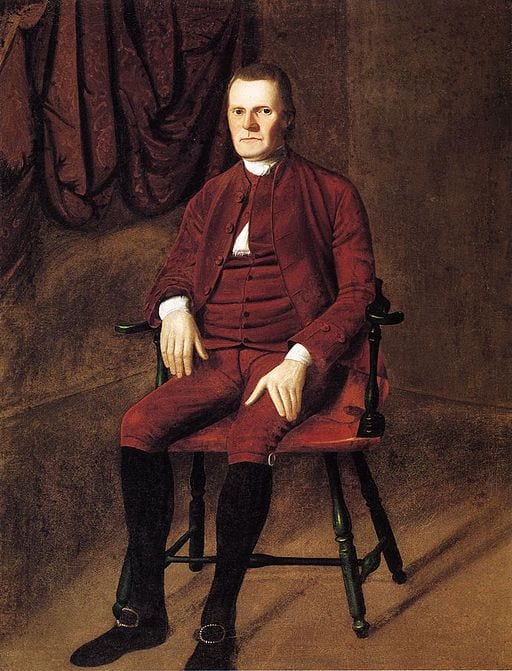Key Figures in the Ratification of the Constitution: Roger Sherman

State: Connecticut (Born in Massachusetts)
Age at Ratifying Convention: 66
Affiliation: Federalist
Vote at Ratifying Convention: Yea
Date of Birth: April 19, 1721
Date of Death: July 23, 1793
Schooling: No formal legal education, Honorary MA from Yale 1768
Occupation: Lawyer, Merchant, Public Security Interests, Cobbler
Prior Political Experience: State Upper House of Connecticut, 1766-1785; Connecticut Superior Court, 1766-1789; Continental Congress, 1774-1781; Signer of Declaration of Independence, 1776; Signer of Articles of Confederation, 1777; Confederation Congress, 1783-1784; Mayor of New Haven, 1784-1786.
Other Political Activities: United States House of Representatives, 1789-1791; United States Senate, 1791-1793.
Biography from the National Archives: In 1723, when Sherman was 2 years of age, his family relocated from his Newton, Massachusetts, birthplace to Dorchester (present Stoughton). As a boy, he was spurred by a desire to learn and read widely in his spare time to supplement his minimal education at a common school. But he spent most of his waking hours helping his father with farming chores and learning the cobbler’s trade from him. In 1743, 2 years after his father’s death, Sherman joined an elder brother who had settled in New Milford, Connecticut.
Purchasing a store, becoming a county surveyor, and winning a variety of town offices, Sherman prospered and assumed leadership in the community. In 1749, he married Elizabeth Hartwell, by whom he had seven children. Without benefit of a formal legal education, he was admitted to the bar in 1754 and embarked upon a distinguished judicial and political career. In the period 1755-61, except for a brief interval, he served as a representative in the colonial legislature and held the offices of justice of the peace and county judge. Somehow he also eked out time to publish an essay on monetary theory and a series of almanacs incorporating his own astronomical observations and verse.
In 1761, Sherman abandoned his law practice, and moved to New Haven, Connecticut. There, he managed two stores, one that catered to Yale students, and another in nearby Wallingford. He also became a friend and benefactor of Yale College, and served for many years as its treasurer. In 1763, or three years after the death of his first wife, he wed Rebecca Prescott, who bore eight children.
Meanwhile, Sherman’s political career had blossomed. He rose from justice of the peace and county judge to an associate judge of the Connecticut Superior Court and to representative in both houses of the colonial assembly. Although opposed to extremism, he promptly joined the fight against Britain. He supported nonimportation measures and headed the New Haven committee of correspondence.
Sherman was a longtime and influential member of the Continental Congress (1774-81 and 1783-84). He won membership on the committees that drafted the Declaration of Independence and the Articles of Confederation, as well as those concerned with Indian affairs, national finances, and military matters. To solve economic problems, at both national and state levels, he advocated high taxes rather than excessive borrowing or the issuance of paper currency.
While in Congress, Sherman remained active in state and local politics, continuing to hold the office of judge of the Connecticut Superior Court, as well as membership on the council of safety (1777-79). In 1783 he helped codify Connecticut’s statutory laws. The next year, he was elected mayor of New Haven (1784-86).
Although on the edge of insolvency, mainly because of wartime losses, Sherman could not resist the lure of national service. In 1787, he represented his state at the Constitutional Convention, and attended practically every session. Not only did he sit on the Committee on Postponed Matters, but he also probably helped draft the New Jersey Plan and was a prime mover behind the Connecticut, or Great, Compromise, which broke the deadlock between the large and small states over representation. He was, in addition, instrumental in Connecticut’s ratification of the Constitution.
Sherman concluded his career by serving in the U.S. House of Representatives (1789-91) and Senate (1791-93), where he espoused the Federalist cause. He died at New Haven in 1793 at the age of 72 and is buried in the Grove Street Cemetery.
